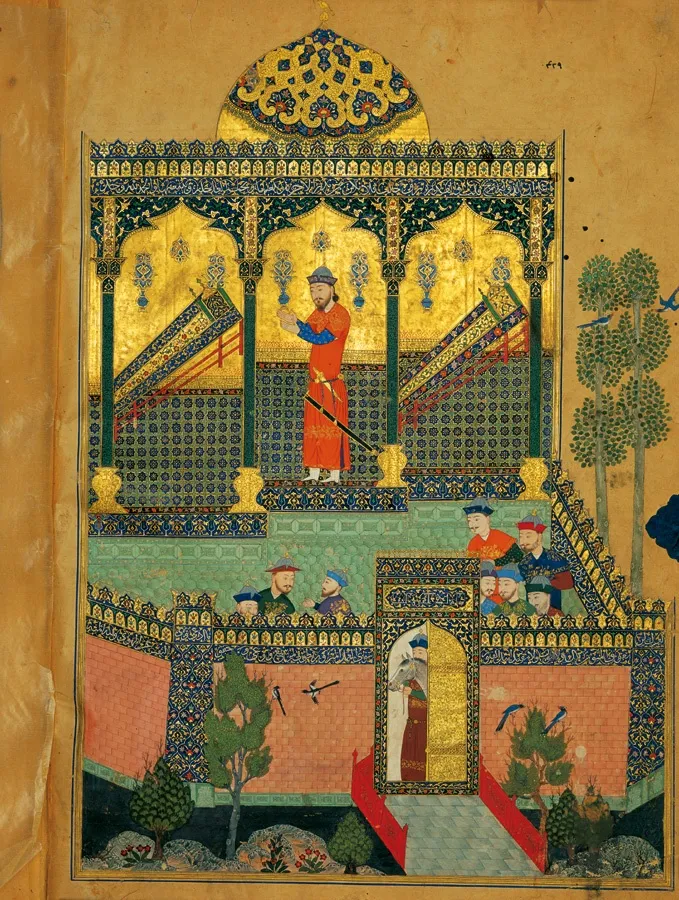Since 1405 Shahrukh was the main ruler of Khurasan and Herat was his capital until 1447. He was himself a book-collector and maintained historians such as Hafiz Abru (d. 1430).
Even before Baysungur embarked on his vigorous cultural activities, Herat already had a library established by his father, Shahrukh. Several manuscripts emerged from its walls, including the historical work "Majma' al-Tavarikh" by Hafiz-i Abru. Shahrukh encouraged Baysungur's interests, helping him assemble the best masters from all regions of Iran.
Alongside "masters of the book" (calligraphers, illuminators, miniaturists, binders, etc.), jewelers (zargaran), carpenters (najjār), inlays specialists (hatambandan), and mosaicists (kashitarashan), as well as masters of carving, engraving, and other metalwork (haddadi) worked in the workshop. So, the range of works produced in the workshop was truly very wide.
You can learn more about the topic in the book-album "Illustrated manuscripts from Mawarannahr in the collections of France" (Volume XXIX) in the series "The Cultural Legacy of Uzbekistan".
The main sponsor of the project is the oilfield services company Eriell-Group.

